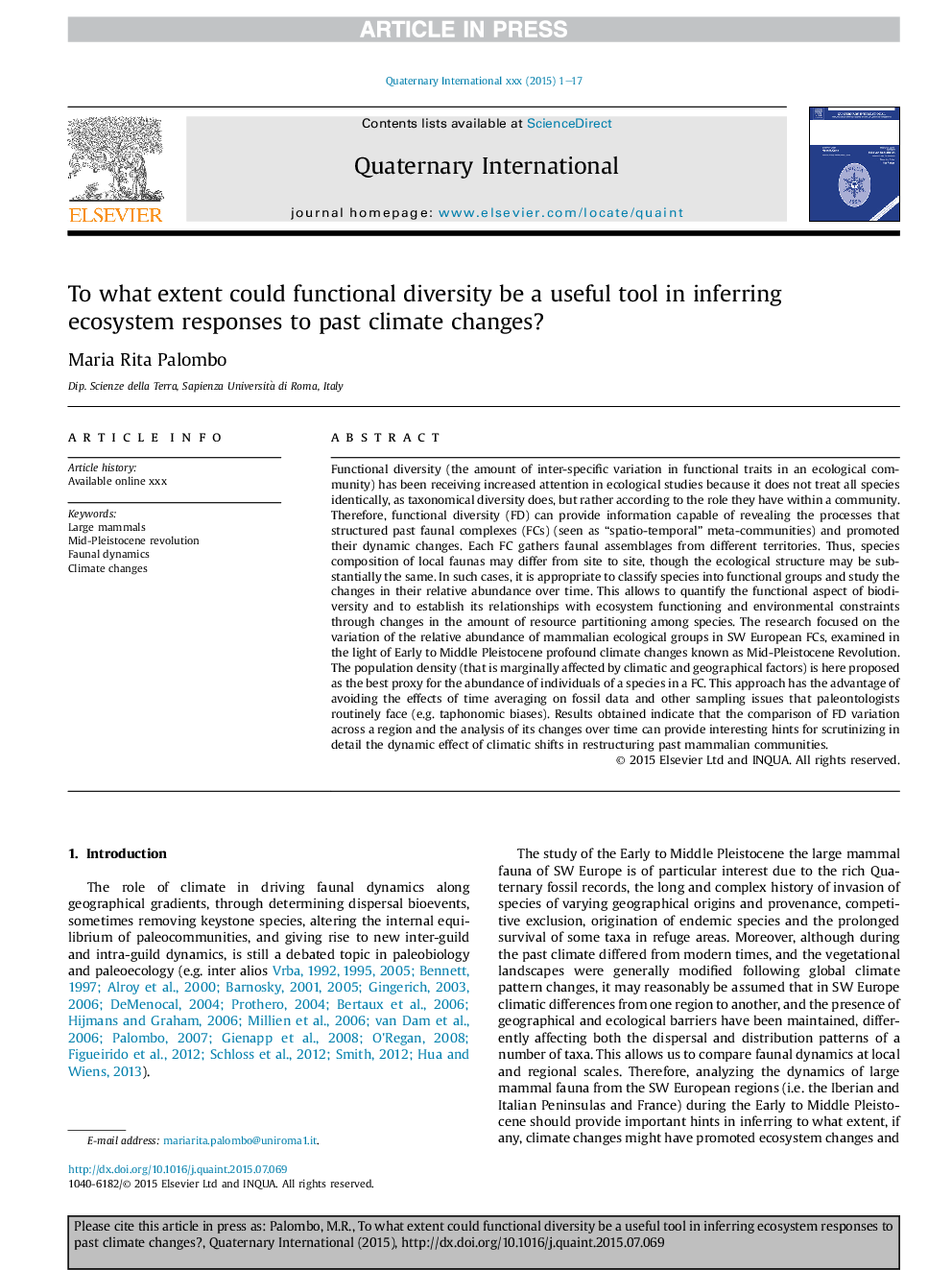| کد مقاله | کد نشریه | سال انتشار | مقاله انگلیسی | نسخه تمام متن |
|---|---|---|---|---|
| 5113618 | 1377942 | 2016 | 17 صفحه PDF | دانلود رایگان |
عنوان انگلیسی مقاله ISI
To what extent could functional diversity be a useful tool in inferring ecosystem responses to past climate changes?
ترجمه فارسی عنوان
تا چه حد می تواند تنوع عملکردی یک ابزار مفید در ارزیابی واکنش اکوسیستم به تغییرات اقلیمی گذشته باشد؟
دانلود مقاله + سفارش ترجمه
دانلود مقاله ISI انگلیسی
رایگان برای ایرانیان
کلمات کلیدی
پستانداران بزرگ، انقلاب نیمه پیلوستوسن، دینامیک فون تغییرات اقلیمی،
موضوعات مرتبط
مهندسی و علوم پایه
علوم زمین و سیارات
زمین شناسی
چکیده انگلیسی
Functional diversity (the amount of inter-specific variation in functional traits in an ecological community) has been receiving increased attention in ecological studies because it does not treat all species identically, as taxonomical diversity does, but rather according to the role they have within a community. Therefore, functional diversity (FD) can provide information capable of revealing the processes that structured past faunal complexes (FCs) (seen as “spatio-temporal” meta-communities) and promoted their dynamic changes. Each FC gathers faunal assemblages from different territories. Thus, species composition of local faunas may differ from site to site, though the ecological structure may be substantially the same. In such cases, it is appropriate to classify species into functional groups and study the changes in their relative abundance over time. This allows to quantify the functional aspect of biodiversity and to establish its relationships with ecosystem functioning and environmental constraints through changes in the amount of resource partitioning among species. The research focused on the variation of the relative abundance of mammalian ecological groups in SW European FCs, examined in the light of Early to Middle Pleistocene profound climate changes known as Mid-Pleistocene Revolution. The population density (that is marginally affected by climatic and geographical factors) is here proposed as the best proxy for the abundance of individuals of a species in a FC. This approach has the advantage of avoiding the effects of time averaging on fossil data and other sampling issues that paleontologists routinely face (e.g. taphonomic biases). Results obtained indicate that the comparison of FD variation across a region and the analysis of its changes over time can provide interesting hints for scrutinizing in detail the dynamic effect of climatic shifts in restructuring past mammalian communities.
ناشر
Database: Elsevier - ScienceDirect (ساینس دایرکت)
Journal: Quaternary International - Volume 413, Part B, 22 August 2016, Pages 15-31
Journal: Quaternary International - Volume 413, Part B, 22 August 2016, Pages 15-31
نویسندگان
Maria Rita Palombo,
